The Cylindropuntia genus has soft, spineless stems known as cladodes, that may be cylindrical or flattened. There are many different Cylindropuntia varieties to talk about.
These plants are usually quite low growing and spread by means of underground rhizomes; however, some can become erect cactus-like plants. It contains species that inhabit dry regions like North America and northern Africa. The name is derived from the Greek words kylin (χύλιν) meaning ‘twisted’ and opuntia (ὀπούντια) meaning “with a large fruit”.
Let’s find more about Cylindropuntia varieties.
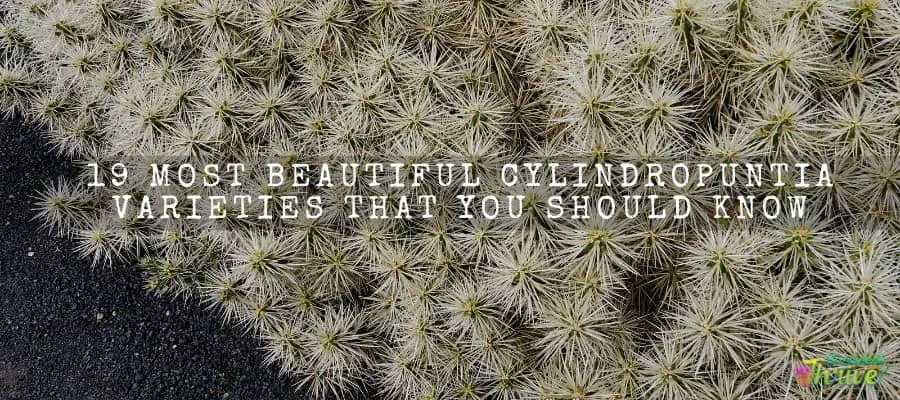
01. Snake cactus (Cylindropuntia spinosior)
Cylindropuntia spinosior usually grow as shrub types. Further they grow in an erect manner too. They would be about 1 m at maturity. Cylindropuntia spinosior form mid gray green pads and they would be about 10-24 cm in length.
Further those pads would be 1.5-3 cm in diameter. Cylindropuntia spinosior plants produce flowers in rose purple. Besides, they produce some fruit which you could spot in yellow.
They would consist of 6-24 spines, and these spines would be white to gray in color. They are native in Mexico and prefer to grow in hardiness zones 5.
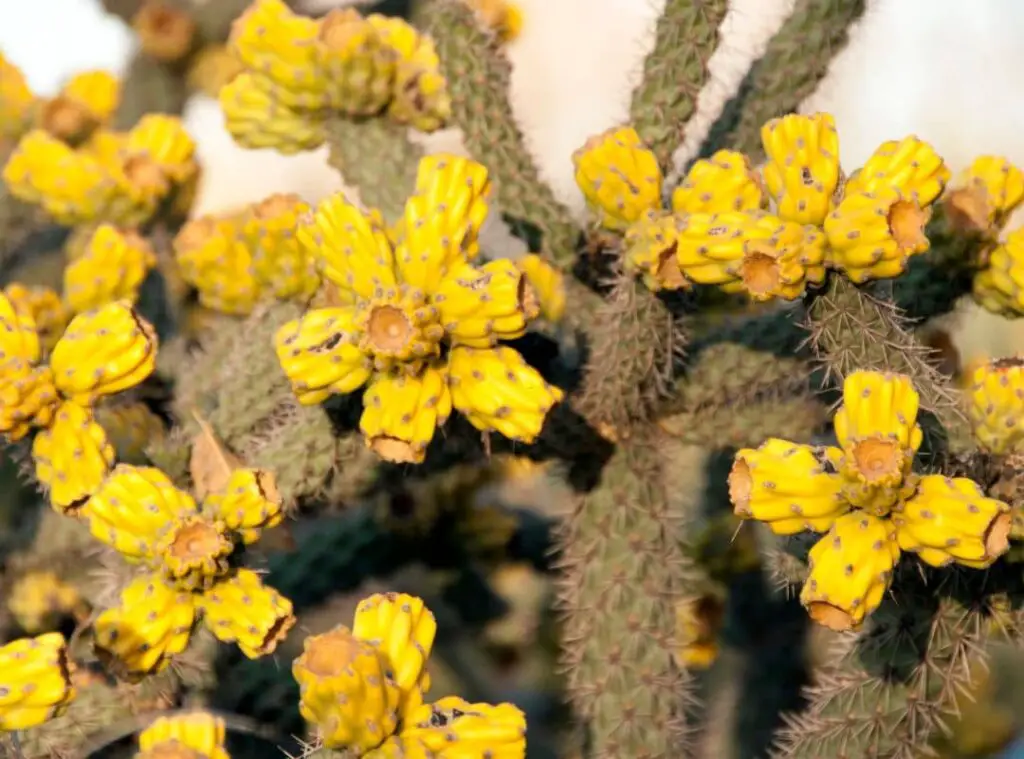
02. Hudson pear (white-spined) (Cylindropuntia rosea)
Cylindropuntia rosea plants are low growing shrub type plants. They would grow up to 1 m in height and 3 m in width. They consist of deciduous leaves. You could see Cylindropuntia rosea plants forming pads and segments in gray pale green colors.
In addition to that they may consist of prominent tubercles too. Further they would produce flowers in pink red. Moreover, Cylindropuntia rosea plants would produce oblong egg shaped fruits. They would be green, yellow green in color.
Cylindropuntia rosea may also consist of seven to fourteen spines. Cylindropuntia rosea are native plants to Mexico.
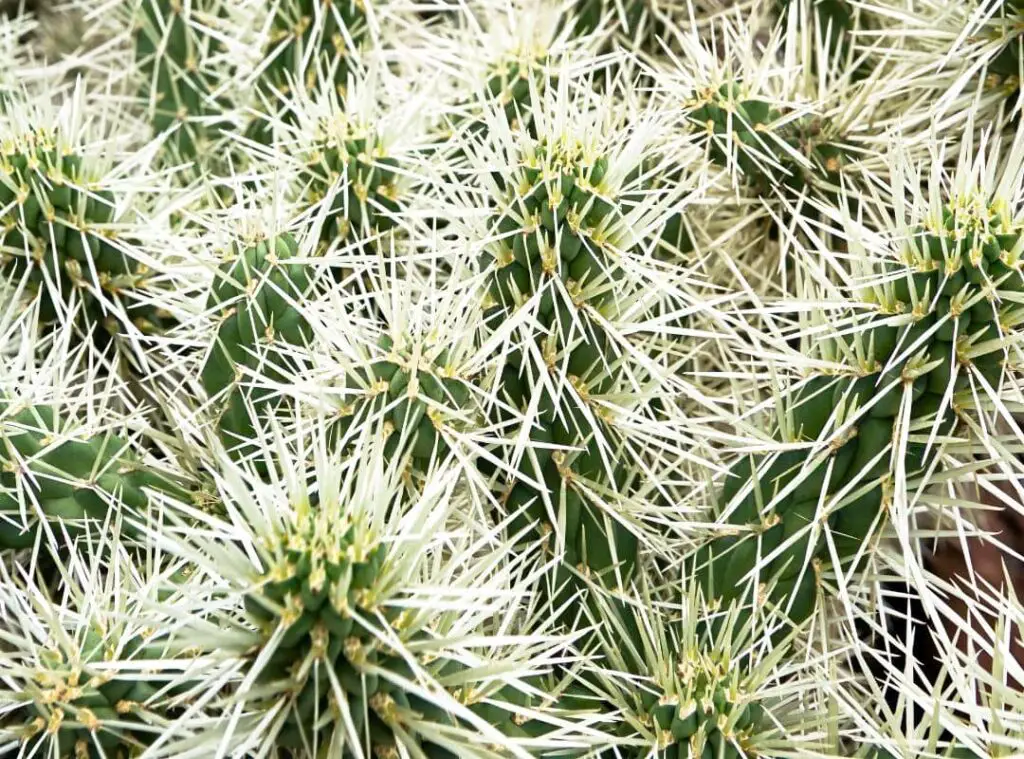
03. Jumping cholla (Cylindropuntia prolifera)
Cylindropuntia prolifera are low shrub growing plants which consist of deciduous leaves. They would also consist of green, gray pads which would be about 4-15 cm in length. Those pads would be four to five cm in width.
Cylindropuntia prolifera also consist of prominent tubercles. Cylindropuntia prolifers plants develop flowers in rose to magenta. Further Cylindropuntia prolifera plants produce green colored sterile fruit items as well.
They would consist of 7-11 spines, and these spines would be one to two cm in length. These plants are hailing from Mexico and hardy in USDA zone 8 and above.
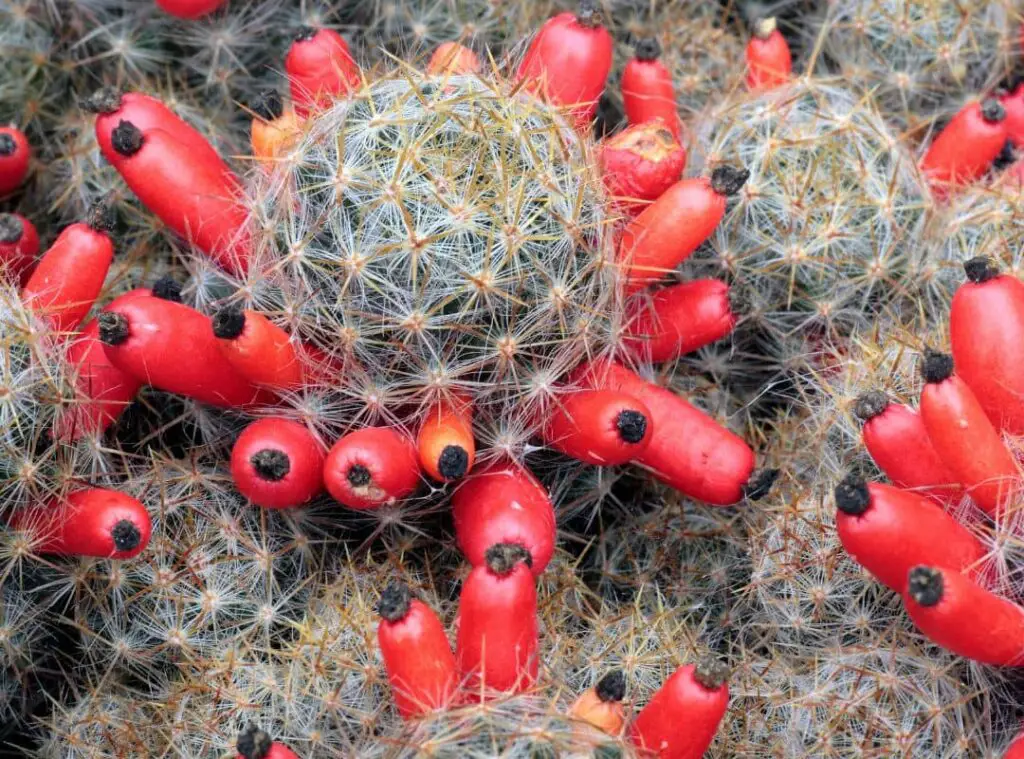
04. Pencil cactus (Cylindropuntia leptocaulis)
Pencil cactus are also yet another shrub type set of plans which emerge with deciduous leaves. They would also produce pads in green, gray and green colors. Those pads would be very slender.
To be precise on the sizes, those pads would be 2-8 cm in length and 0.3-0.5 cm in diameter. Pencil cactus blossom flowers in pale to green, yellow color. Further they produce fruits which would tend to take an egg shape.
Those fruits would be fleshy. Finally they would also consist of 0-4 spines, and you could spot them in cream to pale yellow colors. These plants are native to Mexico. Pencil cactus prefer to grow in USDA hardiness zones 9b-11.
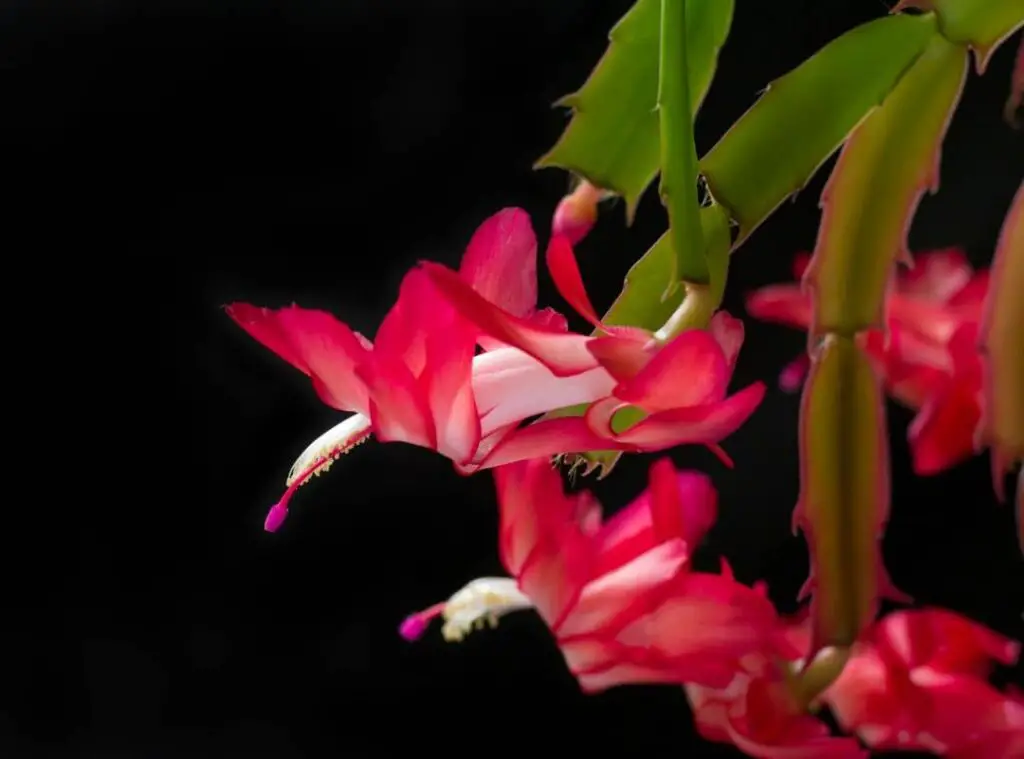
05. Klein’s cholla (Cylindropuntia kleiniae)
Cylindropuntia kleiniae are scraggly shrubs forming a set of plants. They would rise to a maximum height of 0.5-2.5 m. They would also consist of 0.6-1.2 cm wide deciduous leaves. You could spot them carrying light gray green pads and they would be 6-26 cm in length.
Further Cylindropuntia kleiniae widths would be 0.6-1.2 cm.in addition to that, pink to red colored flowers will emerge from these plants. Further those flowers would transform into egg or cylindrical shaped fruit items too.
Cylindropuntia kleiniae plants may carry one to four spines and you could spot them in white to brown colors. They prefer to grow in USDA hardiness zone 5. Moreover, they are endemic plants to the USA and to Mexico.
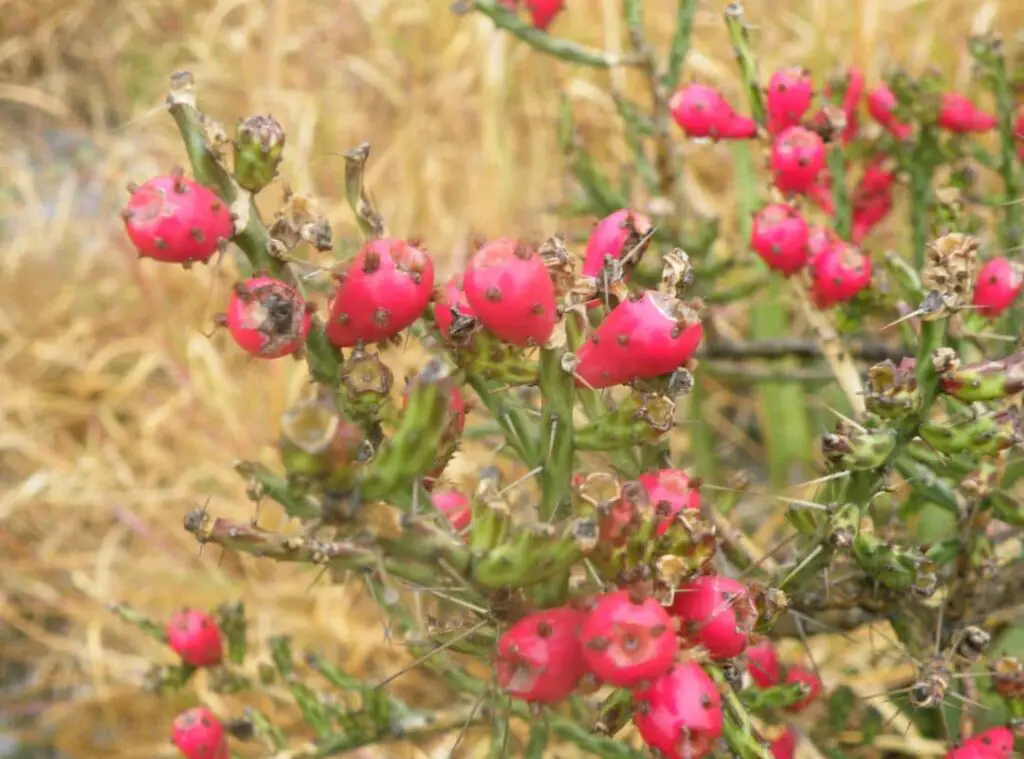
06. Devil’s rope, rope pear (Cylindropuntia imbricata)
Cylindropuntia imbricata plants are small shrub type plants which would reach a maximum height of 3 m at maturity. They may also consist of deciduous leaves.
Further they would also consist of dull gray green colored pads. Cylindropuntia imbricata pads would be 15-40 cm long and 3.5-5 cm in width.
Their large widely spaced tubercles would give them a look of a rope. Besides, you could spot them blossoming with dark pink, magenta-colored flowers. Cylindropuntia imbricata fruit would be greenish yellow color and egg shaped.
They would comprise 10-12 spines. Those spines would be 0.8-3 cm in length. Cylindropuntia imbricata plants are endemic plants to the USA and to Mexico. Cylindropuntia imbricata’s preferred USDA zones 5-11.
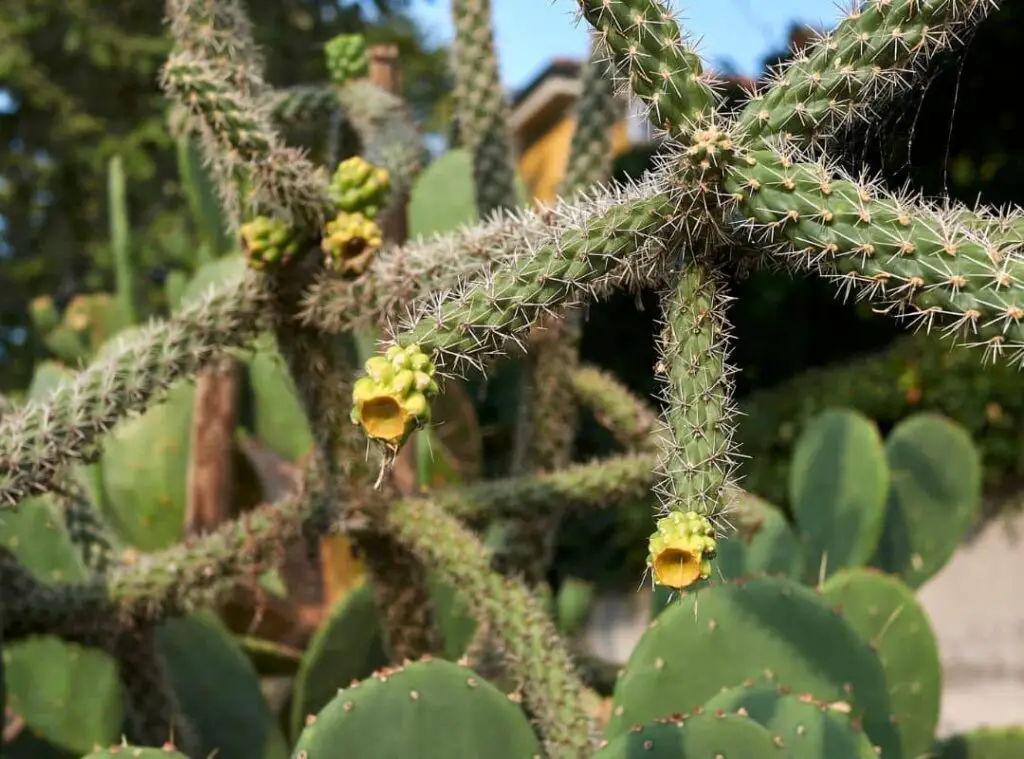
07. Coral cactus, boxing glove cactus (Cylindropuntia fulgida var. mamillata)
Cylindropuntia fulgida var. mamillata grow as shrub types too. They may also consist of deciduous leaves. You could spot them flowering rarely. Furthermore, they may often carry distorted pads and segments too. They would be more green and gray in color.
The pads would be 22 cm in length and 4.5 cm in diameter. When they flower rarely you could spot them forming in deep red. Cylindropuntia fulgida var. mamillata fruits would be oval shaped and gray green in color. Cylindropuntia fulgida var. mamillata plants may comprise 4-15 spines.
They would be 0.7-2 cm in length. You could spot them in cream to brown color. These plants would opt to grow in USDA zones 8b-11b. They originate from the USA and Mexico.
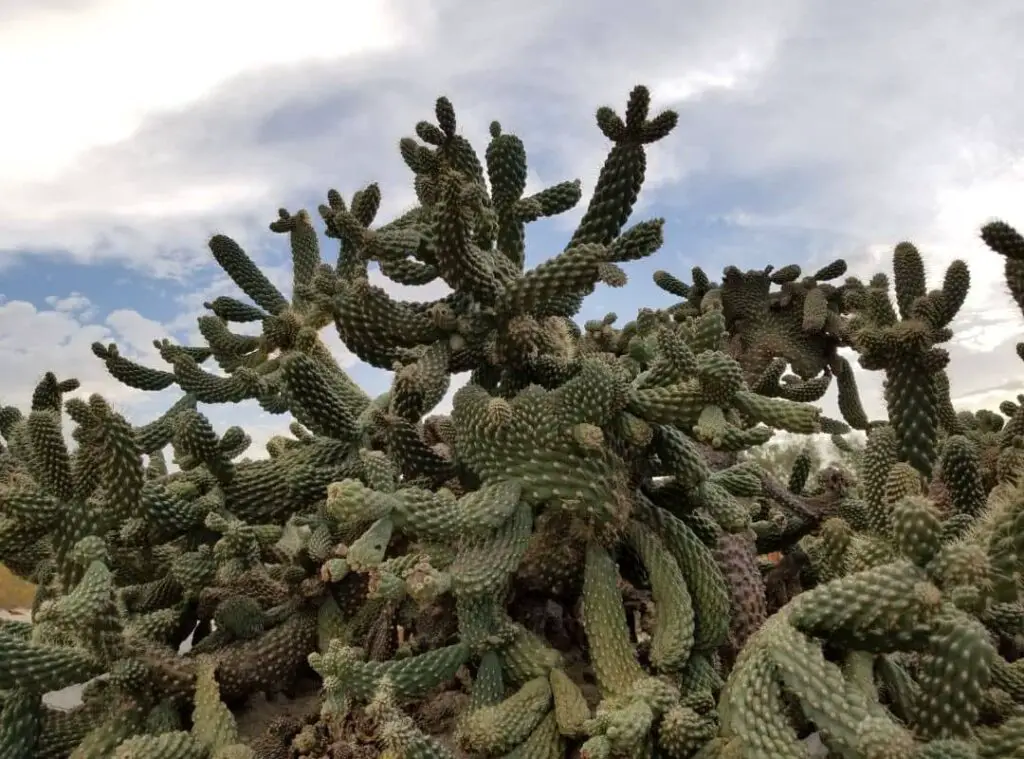
08. Cylindropuntia ramosissim
Cylindropuntia ramosissima would grow in an erect tree like manner. They would be about 2m-6m in height at maturity. Moreover, they may consist of narrow branches too.
When Cylindropuntia ramosissima plants flower, you could expect them to form in orange pink to brownish colors. In addition to that they produce some fruit which you could spot in a dry and spiny manner too. those fruits would be 2cm in length.
Apart from that these plants may also consist of few spines. They are native to the USA. Further these plants opt to grow well in USDA hardiness zones 9a-10b.
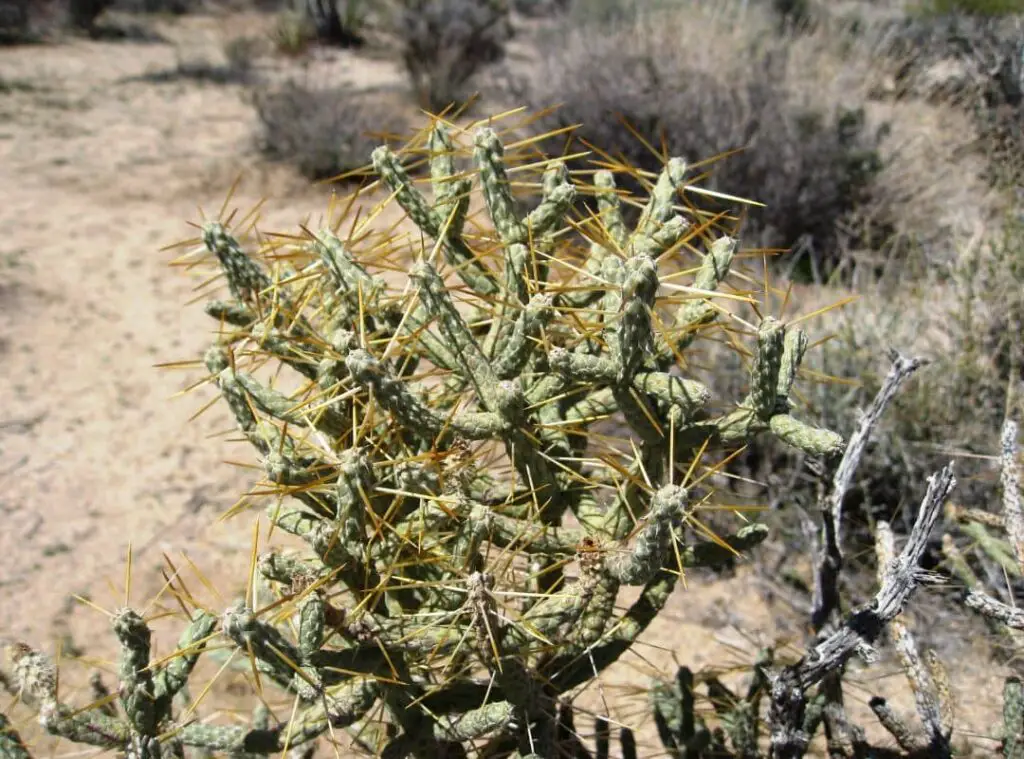
09. Cylindropuntia bigelovii
Cylindropuntia bigelovii are hailing from the USA. These plants also form in erect tree like manner.Their stubby branches would consist of a layer of silvery white spines.
They would be 1 inch in length. Once they get older, you could see their trunk gets darker in color. These plants would produce flowers in spring and summer, and they would emerge in greenish yellow colors.
They would reach a maximum height of 3-8 feet at maturity. Furthermore, they would be about 90-240 cm. They opt to grow well in USDA hardiness zones 9-11.
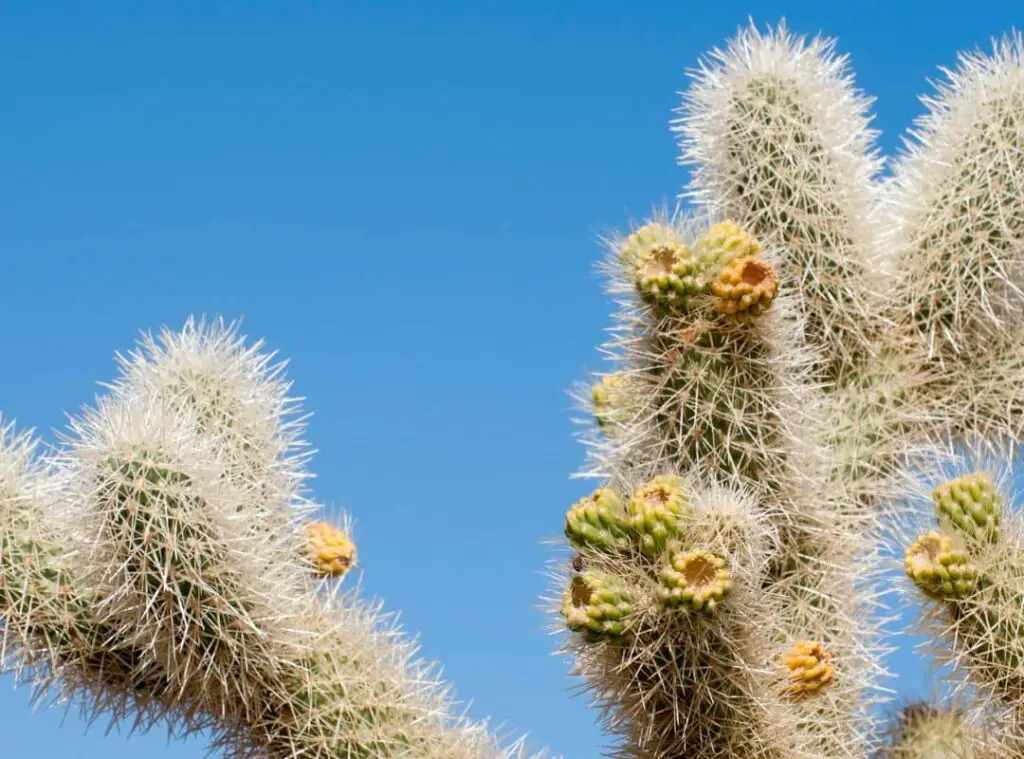
10. Cylindropuntia californica
Cylindropuntia californica usually grows in a sprawling manner. Further they would be about 3m in height when they fully grow to their best potential. Cylindropuntia californica consists of segments which you could spot in green purple colors.
They tend to take a narrow and cylindrical shape. Cylindropuntia californica spines would be either gray or reddish in color. Besides those spines would be about 3m in length. They would emerge flowers in yellow.
Further chances are that they may produce flowers in green or purple tinges as well. Moreover, these plants form a fruit which is green or yellow in color. They would be about 2-3 cm long. They opt to grow well in USDA zones 9a-11. These plants are endemic to southern California.
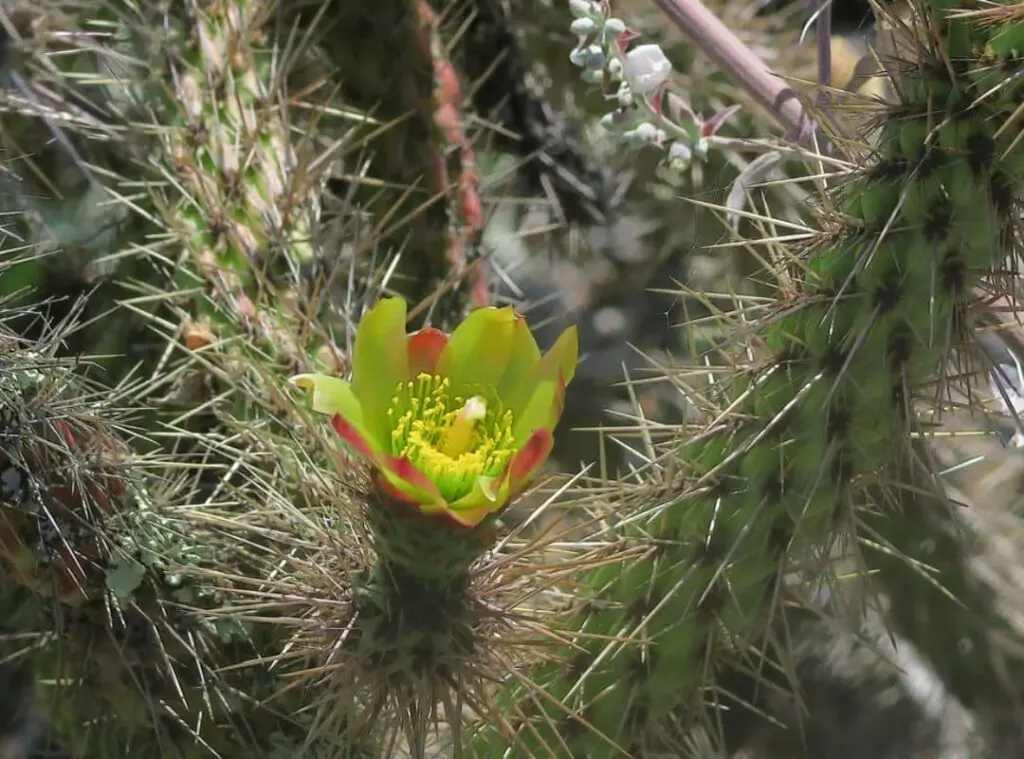
11. Cylindropuntia cholla
Cylindropuntia cholla plants are native to Mexico and to the USA. They grow as spiny shrub type plants or as trees. They would reach a height of 0.5-3m at maturity.
Their stem would be more cylindrical. In addition to that these plants may consist of cream gray areolas as well. Cylindropuntia cholla leaves would form only on the young plants. They may consist of numerous spines as well.
you could spot them in orange, brown color. They would bloom with pale pink to deep purple flowers. These plants produce a green colored spineless fruit item too.
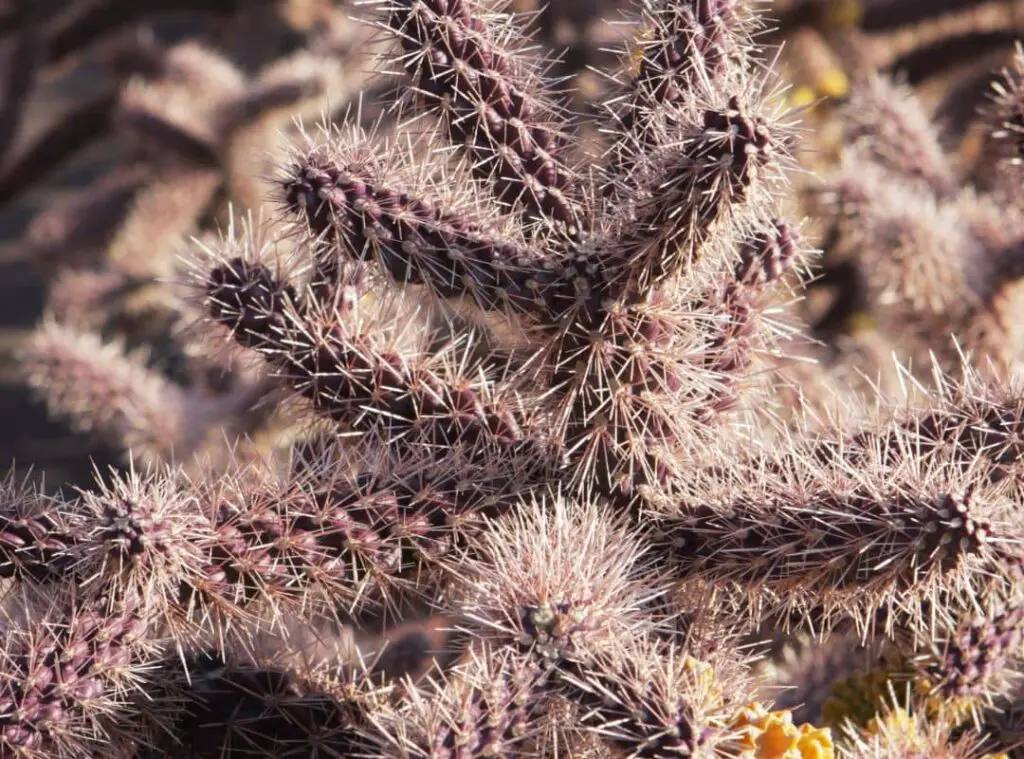
12. Cylindropuntia davisii
Cylindropuntia davisii are endemic plants to New Mexico and to the USA. They would grow as densely branched shrubs. Furthermore, these plants would reach a maximum height of 0.6 m at maturity. Cylindropuntia davisii comprises yellow, black spines.
Furthermore, they may consist of loose yellow sheaths as well. Cylindropuntia davisii bloom with yellow green flowers and they may carry purple red tinges as well.
Besides, they produce some fruit in yellow. Those fruits would be pulpy and spineless. Cylindropuntia davisii plants grow well in USDA zone 5.
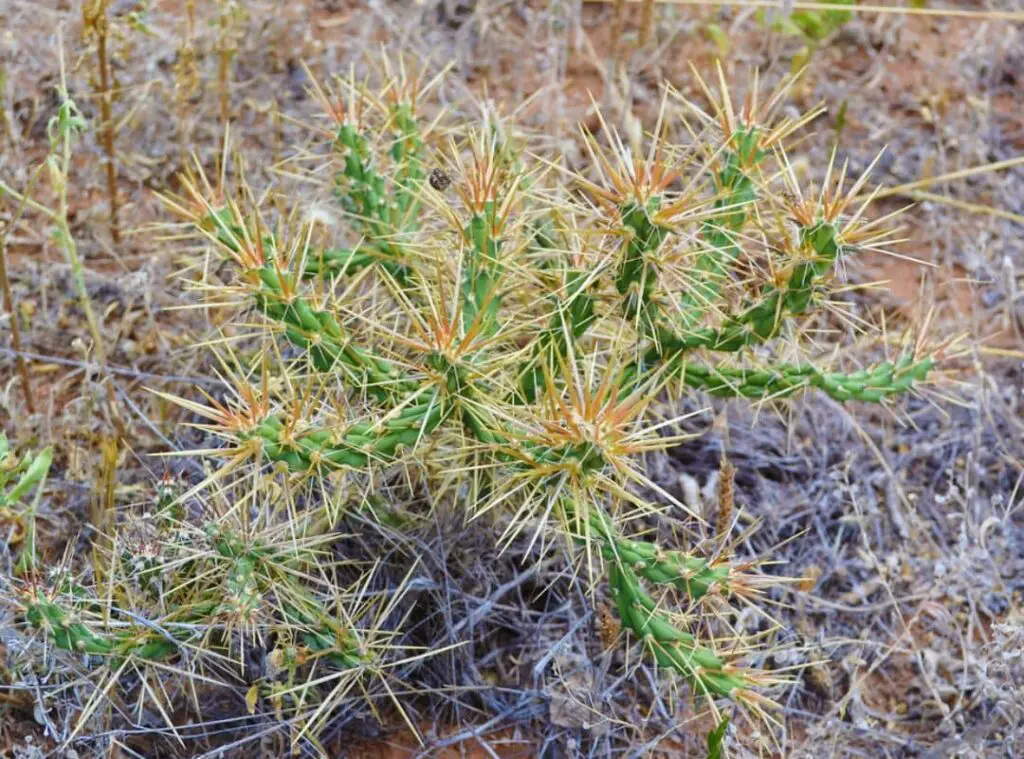
13. Cylindropuntia echinocarpa
Cylindropuntia echinocarpa are also originating from the USA and from Mexico. They would reach a maximum height of 2m when they grow to their best potential. Their stems and branches would tend to take a cylindrical shape.
Cylindropuntia echinocarpa spines would be gray, yellow in color. Besides, they would produce flowers in green, yellow. Further chances are that they may form in pink, brown colors as well.
Cylindropuntia echinocarpa fruit would be bumpy and spiny. They would be tan in color, and about two cm in length.
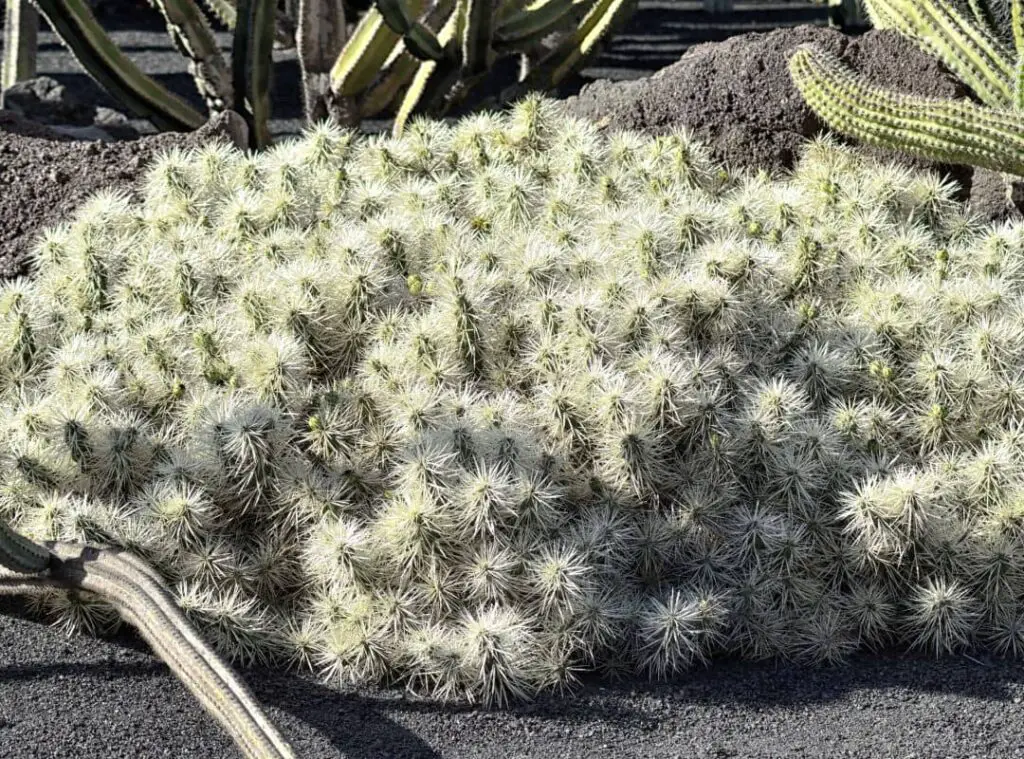
14. Cylindropuntia gander
Cylindropuntia gander are a perennial set of plants, they would grow up to a maximum height of 4 feet and more. Their preferred USDA hardiness zones are 8b-11. These plants are native in the USA and in Mexico just like the rest of other cylindropuntia species.
Cylindropuntia gander would grow as shrub type plants and chances are that they may consist of several trunks as well. They would blossom with flowers in yellow-to-yellow green. Flowers would tend to take a globose shape.
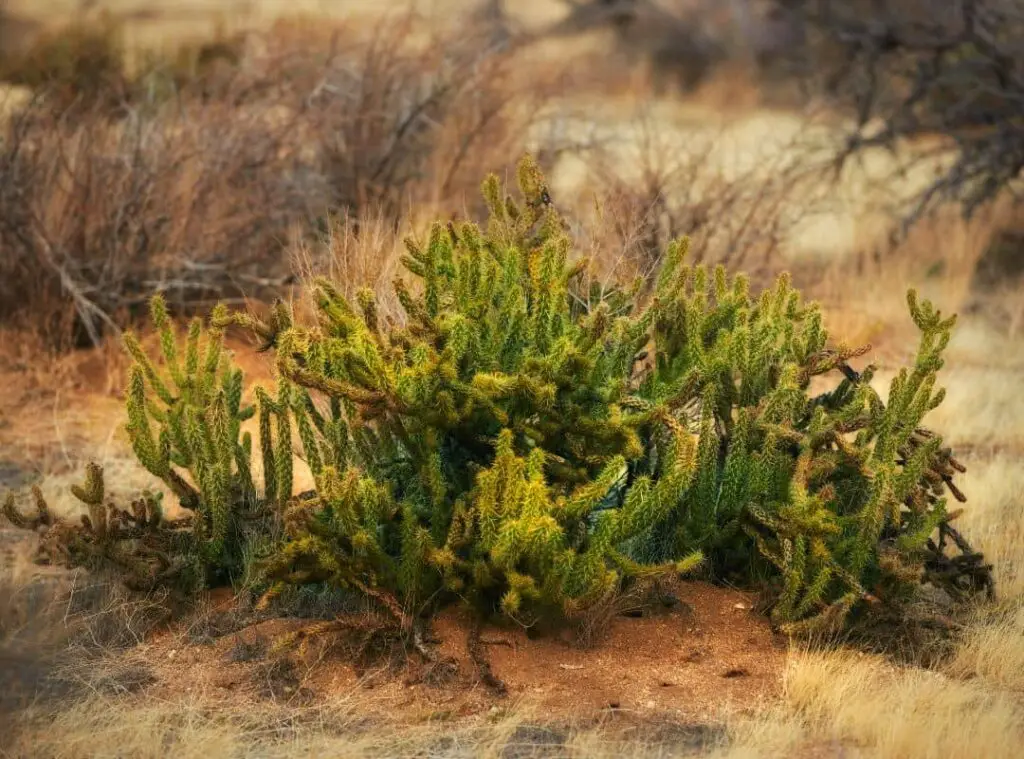
15. Cylindropuntia hystrix
Cylindropuntia hystrix is also a shrubby type of succulents which would form with green cylindrical segments. Besides those plants would form clusters of long spines too.
Cylindropuntia hystrix segments would be 6 inches ( 15 cm ) long. They would produce flowers in pink, red. Moreover, those flowers would be 1.2 inches in width. Cylindropuntia hystrix opt to grow in USDA hardiness zones 8b-10b. These plants are native to Cuba.
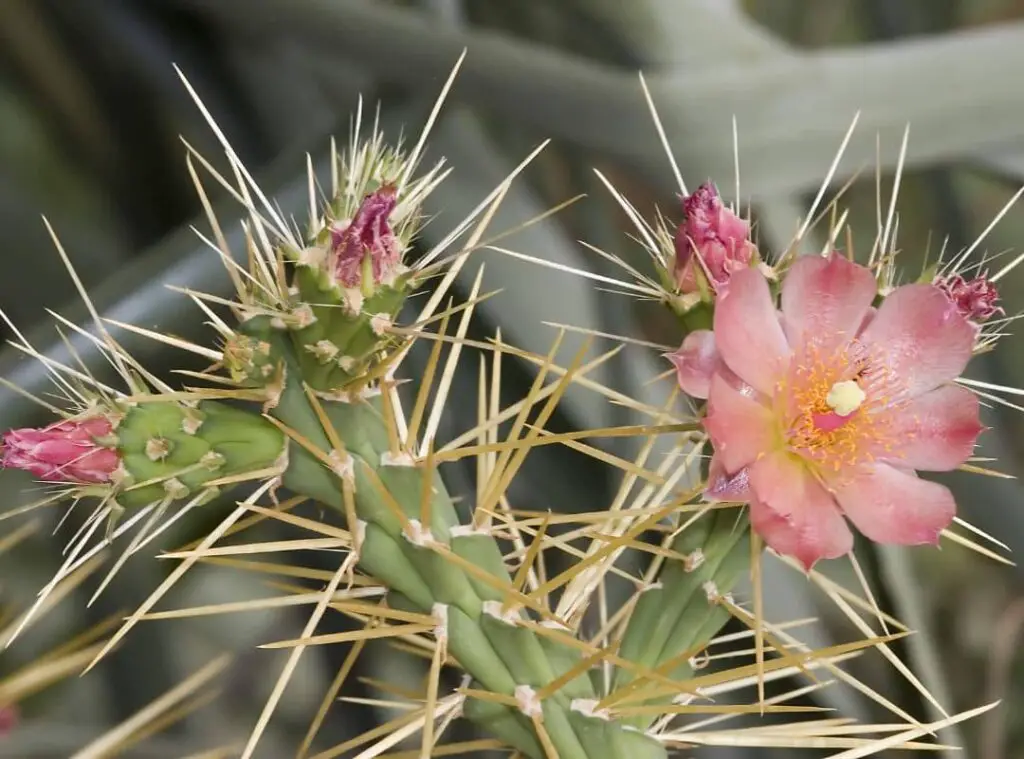
16. Cylindropuntia molesta
Cylindropuntia molesta are originally from Mexico. The highlight of these plants is their spiny shrub type look and the distinct trunk.
Further chances are that they would branch in a basal manner too. They would reach a maximum height of 1-2m. Cylindropuntia molesta comprises sharp spines.
Cylindropuntia molesta leaves are linear and about 10mm in size. cylindropuntia molesta may develop a few spines as well.
Cylindropuntia molesta plants bloom with purple bronze and yellow-colored flowers. Finally, they develop a fruit which is green and later on they would turn yellow.These plants opt to grow in USDA zone 11 and above.
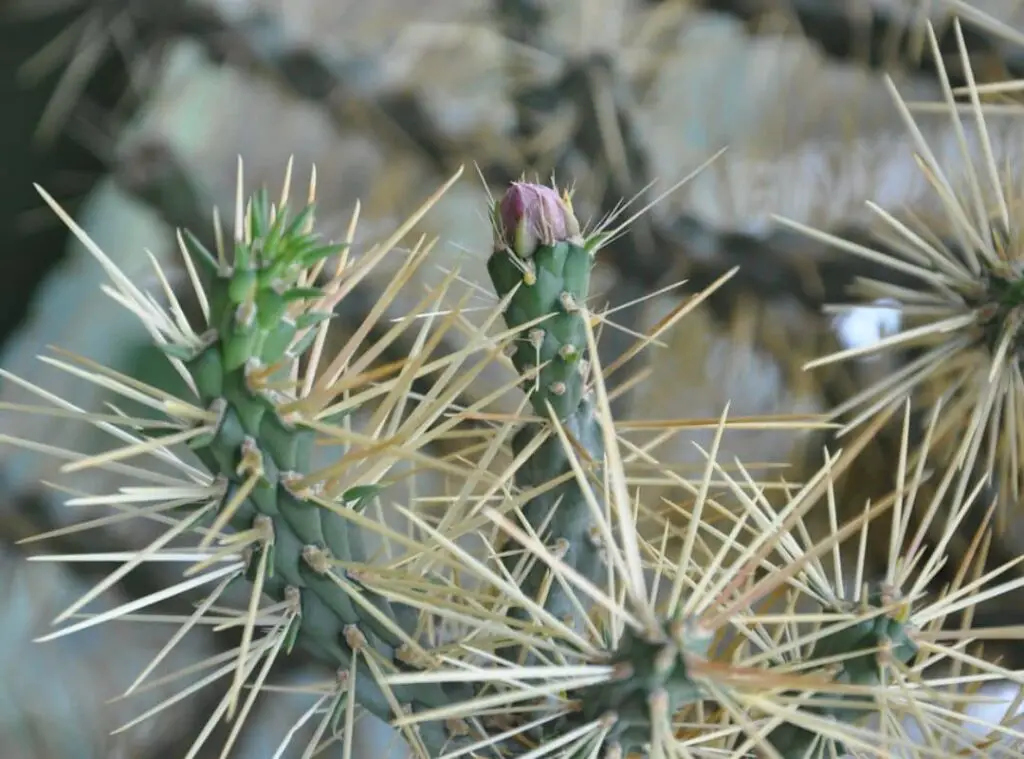
17. Cylindropuntia tunicate
Cylindropuntia tunicate are native to the USA and to Mexico as well. This is a plant species which would form in a densely branched shrub type.
Further they may form in clumps as well. Cylindropuntia tunicate also consists of sharp spines. In addition to that they would carry a cylindrical trunk too. Further they would carry areolas in yellow to tan colors.
Moreover, they may carry 5-12 spines as well. when it comes to flowering, they produce flowers in yellow to yellowish green colors. Their fruits would be club shaped and yellow green in color.

18. Cylindropuntia whipplei
Cylindropuntia whipplei are endemic plants to the United states. They tend to grow in a low mat forming manner. They would grow in a wide array of heights.
For example, their heights may vary from 30cm – 3m. Cylindropuntia whipplei would consist of a layer of white spines.
Besides they would produce flowers in yellow green and those flowers would be somewhat large too. You could spot Cylindropuntia whipplei plants carrying oval to triangular areolas.
Furthermore, these plants would produce white to reddish brown spines as well. In addition to that they would produce a cylindrical fruit item as well. USDA zones 5b-10b are their preferred USDA hardiness zones.
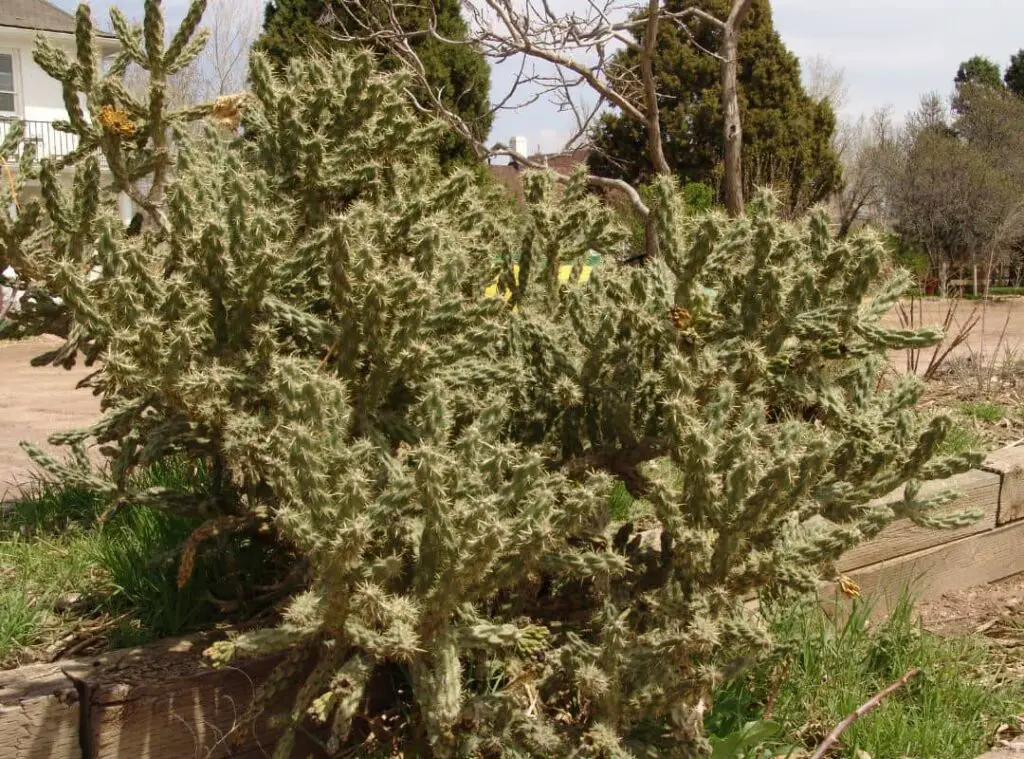
19. Cylindropuntia wolfii
Cylindropuntia wolfii are native plants to the USA and to Mexico. These plants would usually grow in a densely branched manner.
Further they would grow as erect shrub type plants as well. They would reach a maximum height of 1.5m at maturity. You could further spot them carrying pale brown spines which would turn dark brown as they get older.
They form flowers in green, yellow and orange colors. cylindropuntia wolfii fruits would be dry and densely spiny too. USDA zone 9a-11 would suit them the best.
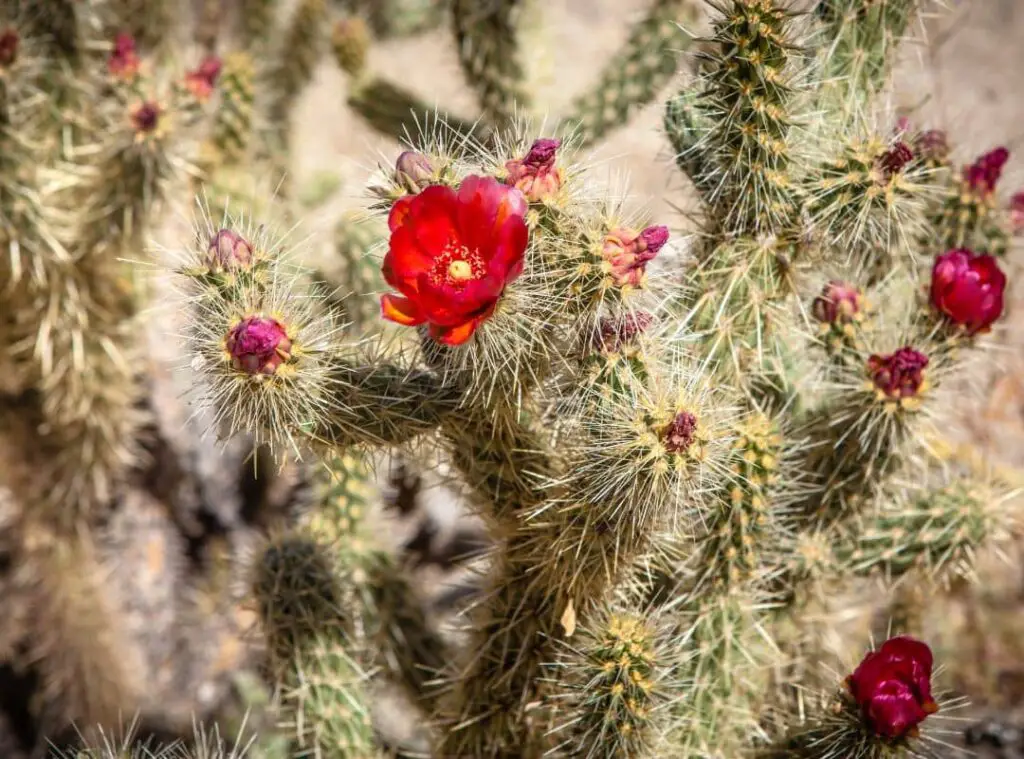
How to take care of cylindropuntia
In terms of care treatments, all the cylindropuntia would prefer to have plenty of sunlight. Ideally you need to expose them for full sunlight during the morning hours of the day.
They can thrive well with minimum water. These are all native to grow in dry and arid weather conditions which literally means they can thrive well with minimum water. Literally if you water them in excess, it may even kill the plants.
Temperature wise, ensure that you expose them for warm temperatures right throughout. Protect the plants from extreme colder temperatures.
That said, they can tolerate small fluctuations in temperature for shorter periods. In terms of the right soil mix, you need to choose a soil mix which has excellent drainage.
If you leave the plants to be in waterlogged soggy weather conditions, it will make the plants rot. Finally, I suggest feeding them with a typical cactus fertilizer so that it would enhance the vigorous growth of the plants.
Conclusion on Cylindropuntia varieties
cylindropuntia plants are such fantastic plants to have. They are hardy and versatile plants. If you look after the plants well and provide the necessary care treatments, they would perform to their best potential.
They would grace the entire space irrespective of the location you grow them. not only that but also, they would perfectly fit in for the freshers on gardening as well. Last but not least there are so many species which you can choose too !
Read Next : Adromischus Maculatus : Hardy Succulent Flowering Plants
